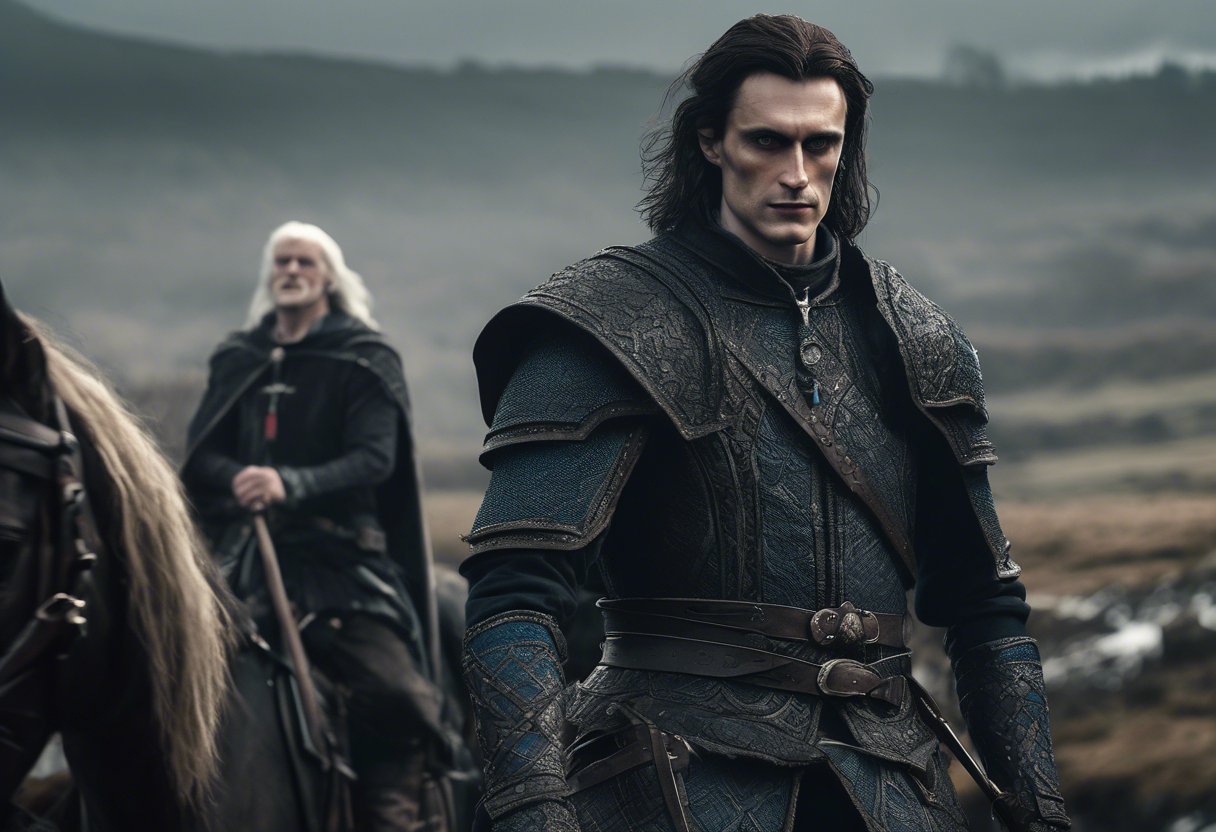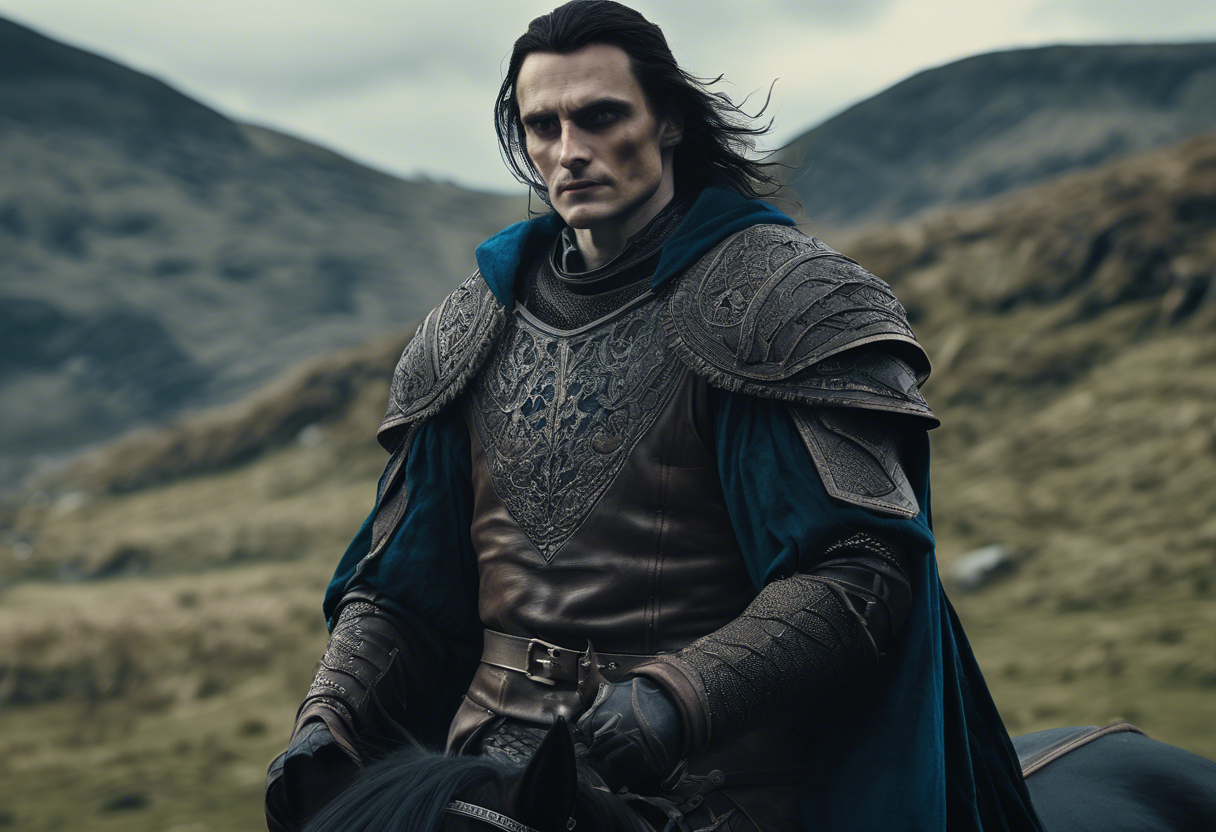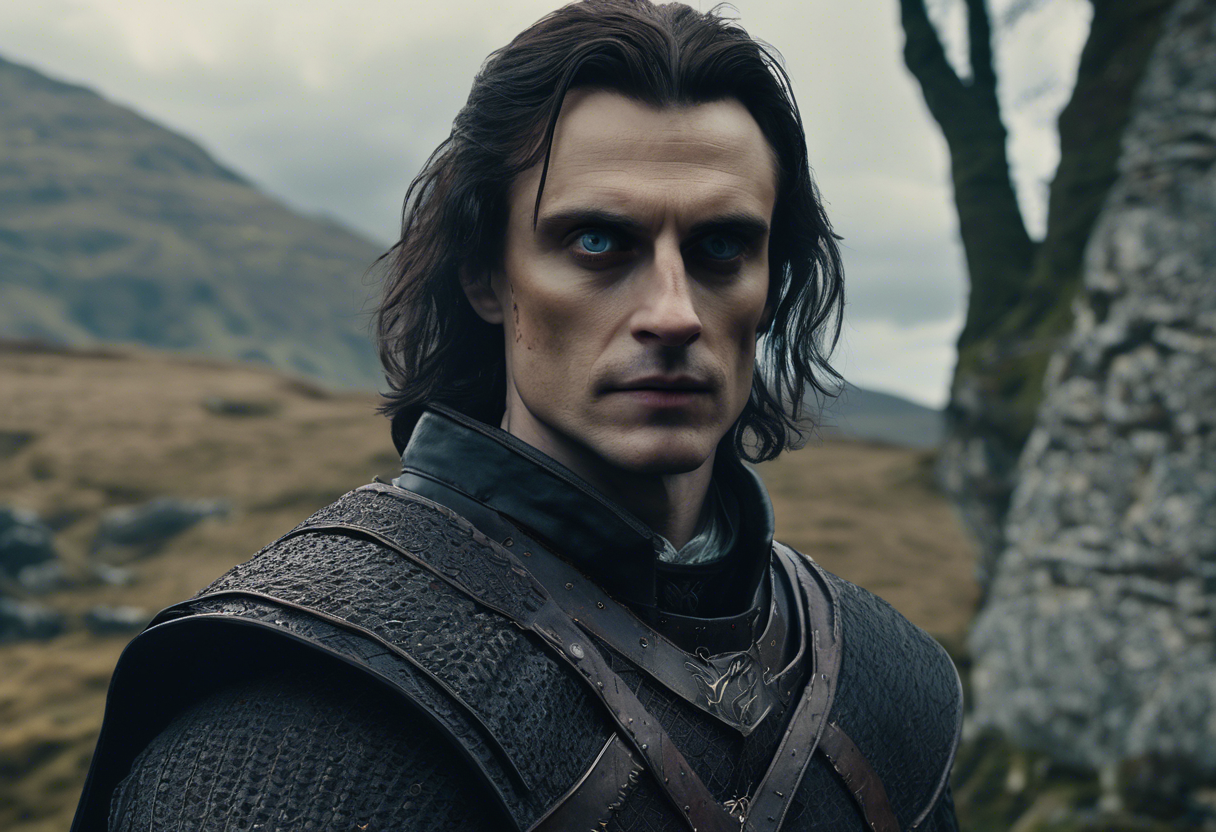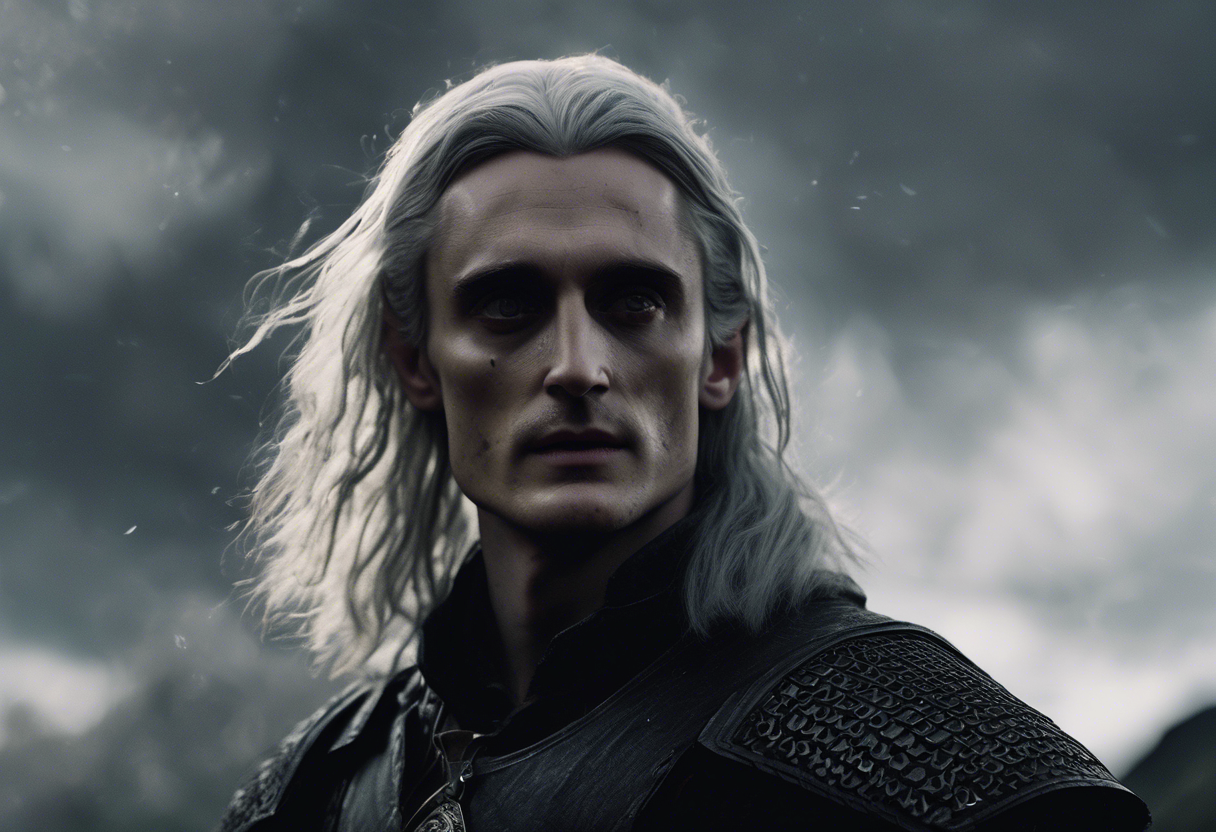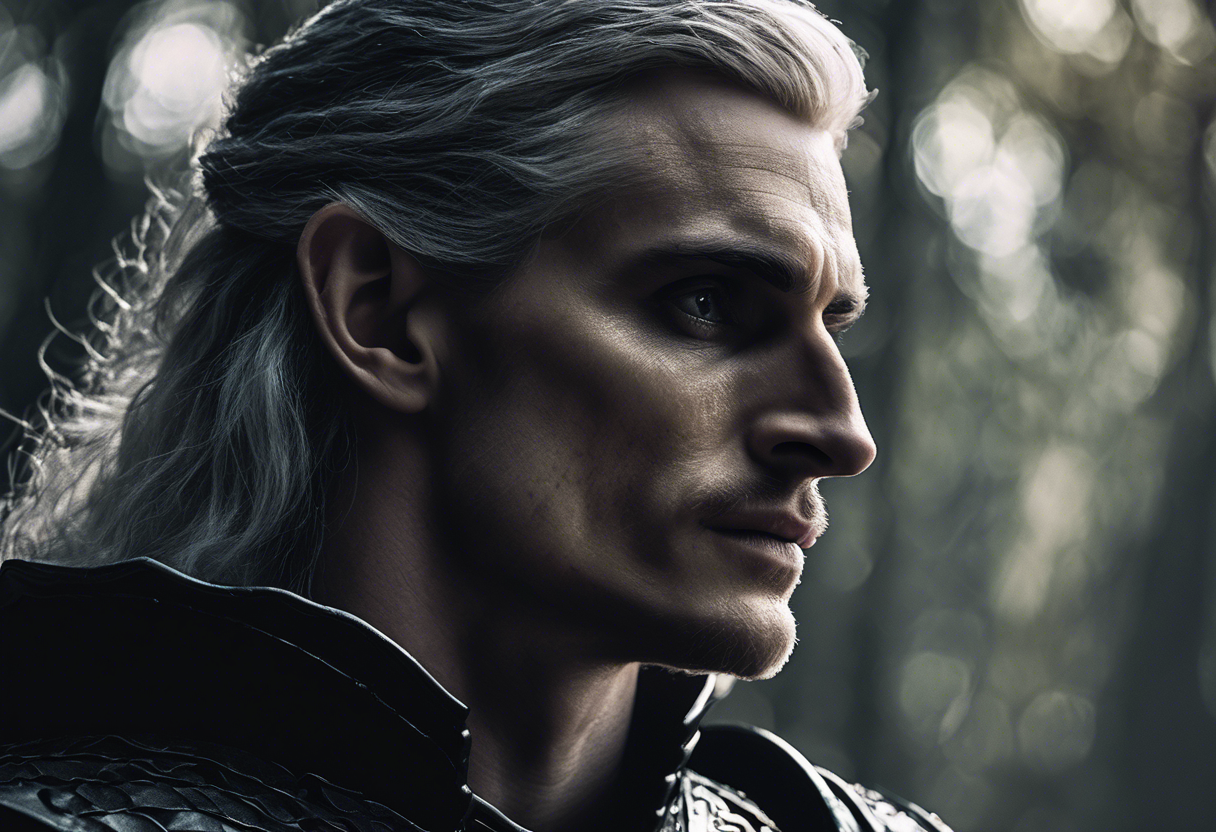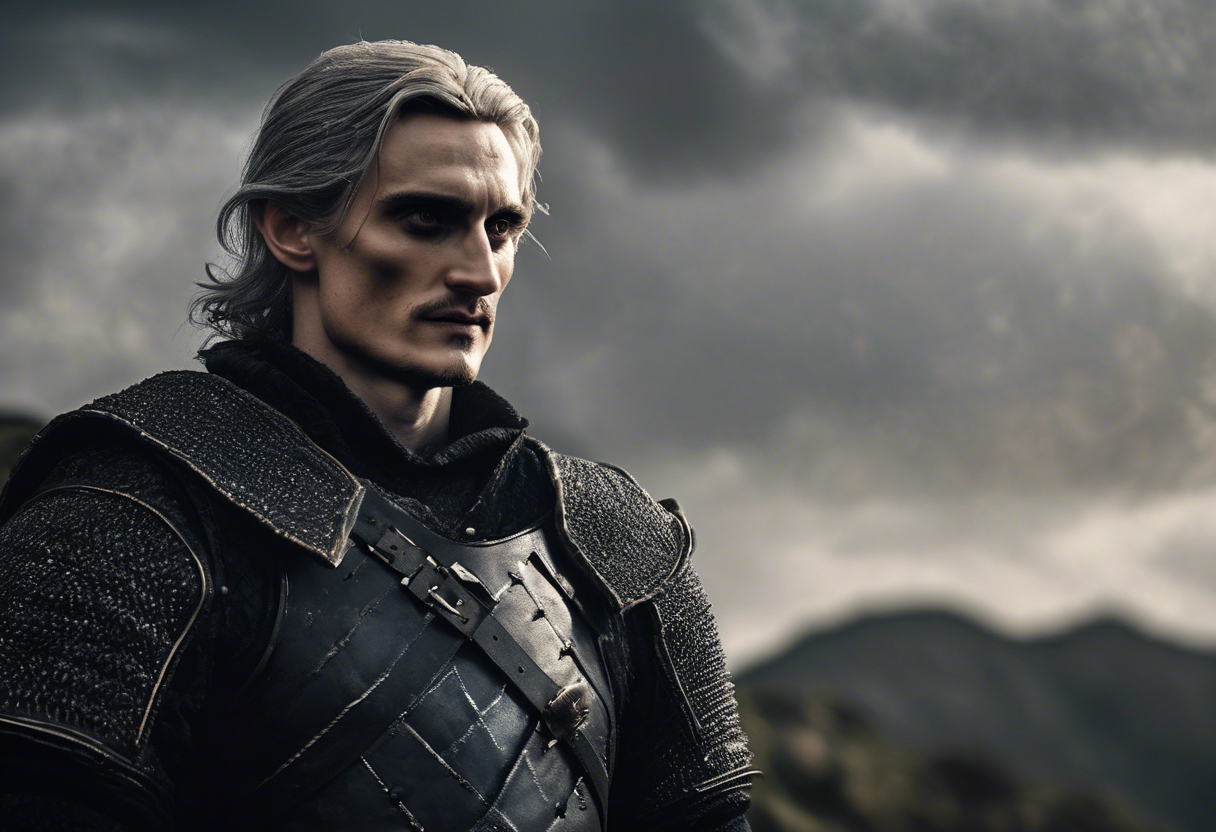Contents
Introduction
Cahir Mawr Dyffryn aep Ceallach, commonly known as Cahir or the Black Knight, is a complex and pivotal character in the Netflix series The Witcher, based on the book series by Andrzej Sapkowski. Born in 1268 in Vicovaro, a region south of the Nilfgaardian Empire, Cahir hails from a noble family and was raised alongside five siblings. His father, Seneschal Ceallach Dyffryn aep Gruffyd, held a significant position in court, which paved the way for Cahir’s ascension in the Nilfgaardian Empire’s military and intelligence services[1].
Cahir’s origins are deeply rooted in his family’s history and his own skills in combat, archery, and horsemanship. He was recruited into the Nilfgaardian Intelligence, also known as the Imperial Military Intelligence, and quickly rose through the ranks to become an officer and a count. His loyalty to the Nilfgaardian Empire, particularly to Emperor Emhyr var Emreis, known as the White Flame, is a defining trait of his character in the early seasons of the show[1].
Cahir’s significance in the series lies in his multifaceted role as both an antagonist and, later, a complex character undergoing redemption. His journey is intertwined with the main characters, especially Geralt of Rivia and Princess Ciri, and he embodies several themes that are central to the narrative of The Witcher.
Role in the Series
Cahir’s storyline in The Witcher is marked by his initial role as a formidable antagonist. He is introduced as the leader of the Nilfgaardian forces that invade Cintra, with the mission to capture Princess Ciri. Despite his failure to capture Ciri, Cahir continues to pursue her throughout the series, driven by his loyalty to the White Flame and the Nilfgaardian Empire[1].
In Season 1, Cahir’s brutal and relentless pursuit of Ciri sets the tone for his character. However, as the series progresses, his actions become more nuanced. After being imprisoned for over a year for his failure to capture Ciri, Cahir is given one last chance by the Emperor to redeem himself. This sets off a significant journey for Cahir, where he begins to question his loyalty and the morality of his actions[1].
By Season 3, Cahir undergoes a profound transformation. He refuses to fight Ciri and instead helps her escape from the elves, marking a turning point in his character arc. This decision reflects his growing internal conflict and his eventual break from the White Flame’s orders. Cahir’s actions in Season 3, including his confrontation with the Scoia’tael and his decision to protect Ciri, signify his shift from a villain to a more complex and sympathetic character[2][4].
Character Analysis
Cahir’s personality is a blend of charisma, conflict, and a deep sense of loyalty. Initially, he is portrayed as a ruthless and efficient commander, willing to go to extreme lengths to achieve his goals. However, as the series progresses, his character is revealed to be more multifaceted. Showrunner Lauren Hissrich describes Cahir as "conflicted, charismatic, haunted, and pure of heart," reflecting the complexity of his character in the original novels by Andrzej Sapkowski[1].
Cahir’s motivations are driven by a mix of duty, loyalty, and personal redemption. His initial actions are guided by his commitment to the Nilfgaardian Empire, but as he faces various challenges and moral dilemmas, he begins to question the true nature of his loyalty. This internal conflict makes him a compelling and relatable character, as audiences witness his struggle to reconcile his past actions with his growing sense of morality[2].
One of Cahir’s significant strengths is his military prowess and strategic thinking, which make him a formidable opponent. However, his flaws, such as his initial blind loyalty and tendency towards violence, also shape his character. His development throughout the series is marked by a gradual shift from a one-dimensional villain to a nuanced and empathetic character[4].
Themes and Symbolism
Cahir embodies several key themes in The Witcher, including the complexities of loyalty, the nature of redemption, and the struggle between duty and personal morality. His character serves as a symbol of the blurred lines between good and evil, highlighting that even the most seemingly villainous characters can undergo significant transformation.
Cahir’s journey also reflects the theme of identity and the search for one’s true purpose. His transition from a loyal knight of the Nilfgaardian Empire to a character who questions and eventually rejects his former allegiance is a powerful exploration of personal growth and self-discovery[2].
Furthermore, Cahir’s interactions with other characters, particularly Geralt and Ciri, underscore the theme of protection and the complexities of relationships. His decision to protect Ciri, despite the risks, shows a deeper level of humanity and empathy, adding depth to the narrative[4].
Cultural Impact
Cahir’s character has had a significant impact on the cultural landscape of The Witcher fandom. His portrayal by Eamon Farren has been well-received by fans, who appreciate the complexity and depth brought to the character. The transformation of Cahir from a villain to a more sympathetic character has sparked numerous discussions and analyses within the fan community.
In adaptations and spin-offs, Cahir’s character has been consistent in his complexity. His appearance in various media, including the books and video games, further solidifies his place as a pivotal character in the Witcher universe. His influence can be seen in how other characters in fantasy series are developed, often with similar arcs of redemption and personal growth[4].
Critical Reception
Cahir’s character has received mixed but generally positive reviews from critics and audiences. Initially, his portrayal as a brutal and efficient commander was seen as a straightforward antagonist role. However, as the series progressed and his character evolved, critics praised the depth and nuance brought to his role.
Eamon Farren’s performance has been lauded for capturing the complexity of Cahir’s character, particularly in his later seasons. The show’s handling of Cahir’s redemption arc has been praised for adding layers to the narrative and making the character more relatable and human[3].
However, some critics have noted that the show’s deviations from the source material, particularly in Cahir’s character development, have been both praised and criticized. The show’s ability to balance faithfulness to the books with original storytelling has been a point of discussion among fans and critics alike[5].
Legacy
Cahir’s enduring appeal lies in his complex and nuanced character arc. He represents a character type that is both flawed and redeemable, making him relatable and compelling to audiences. His journey from a villain to a more sympathetic character has inspired other works in the fantasy genre, where characters undergo similar transformations.
In contemporary discussions, Cahir’s character serves as an example of how characters can evolve and grow, adding depth to storytelling. His legacy in the Witcher series is that of a character who challenges the traditional notions of good and evil, highlighting the complexities of human nature.
As the series continues, Cahir’s role is expected to remain significant, particularly in his interactions with Geralt and Ciri. His story arc has set a precedent for character development in fantasy series, ensuring that his impact will be felt for seasons to come.
References
- https://screenrant.com/witcher-netflix-cahir-black-knight-origins-explained/
- https://screenrant.com/netflix-witcher-season-4-cahir-father-replacement-op-ed/
- https://collider.com/the-witcher-season-4-update-cahir-eamon-farren/
- https://www.dualshockers.com/the-witcher-season-3-cahir-explained/
- https://www.cbr.com/witcher-season-3-eamon-farren-cahir-character-arc/

